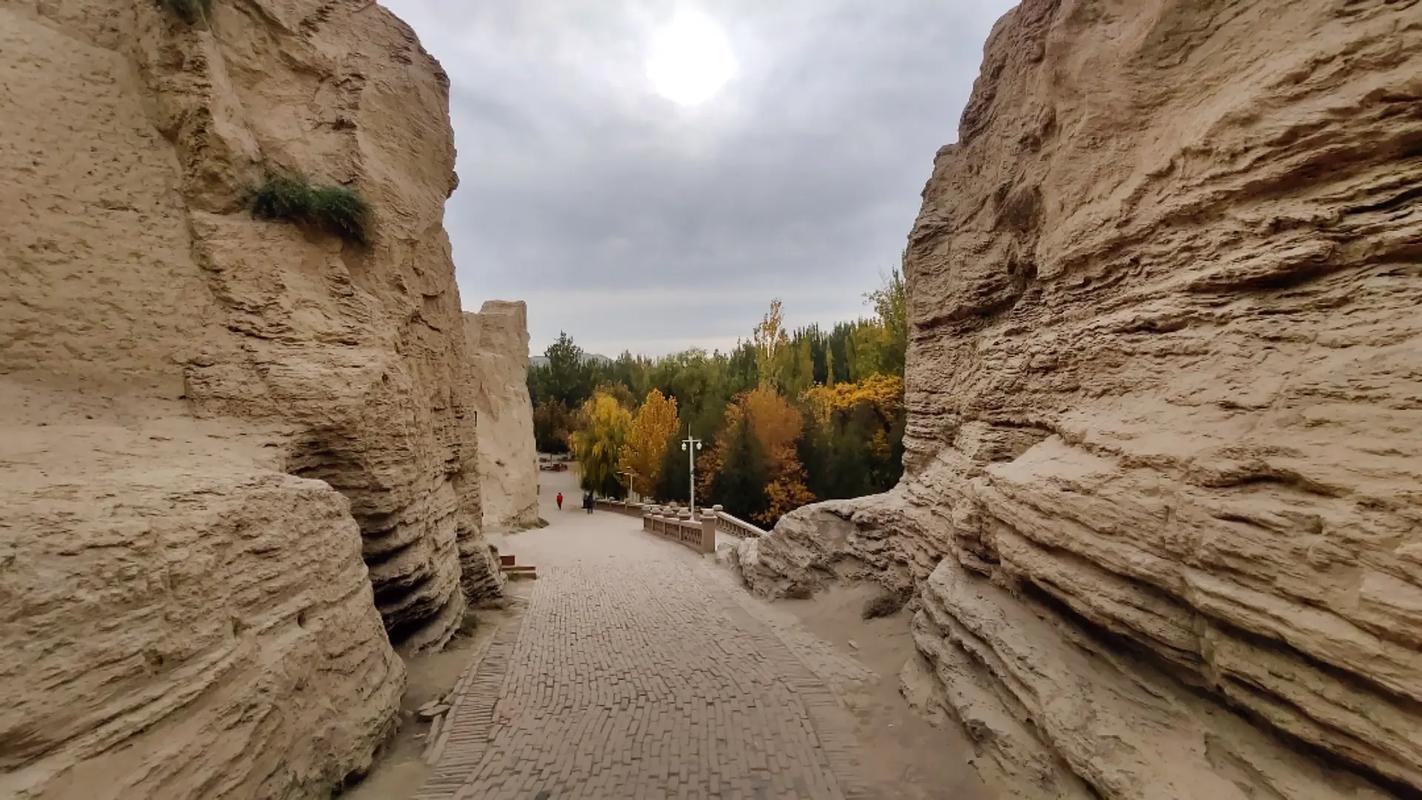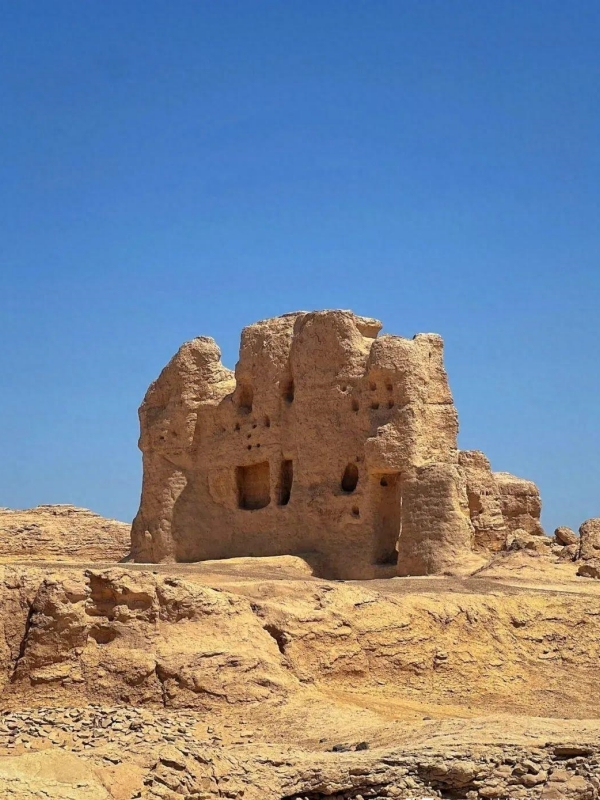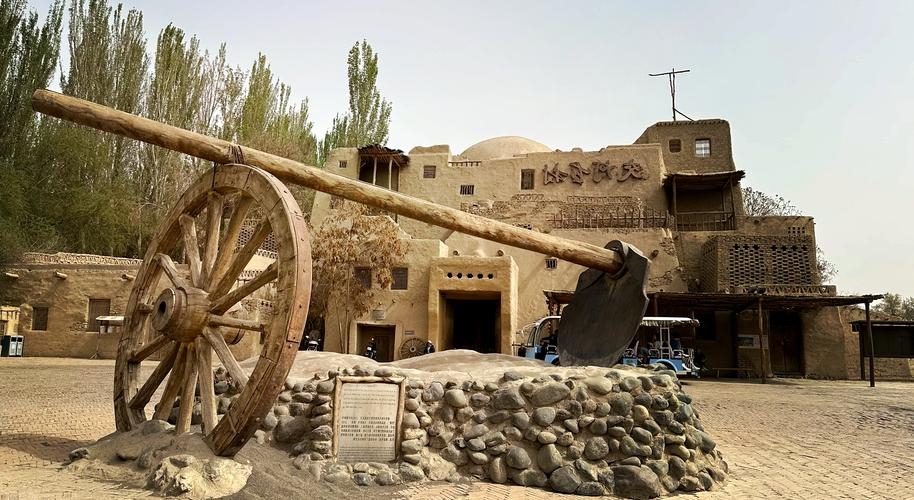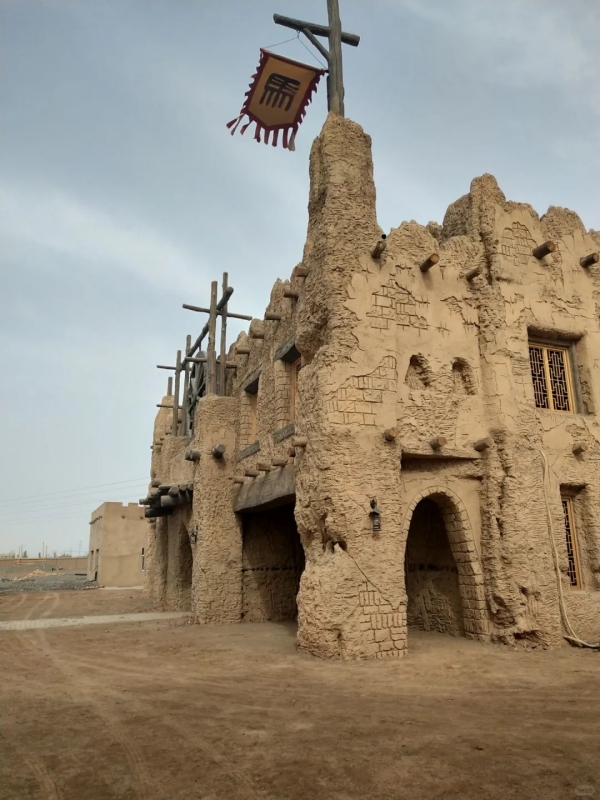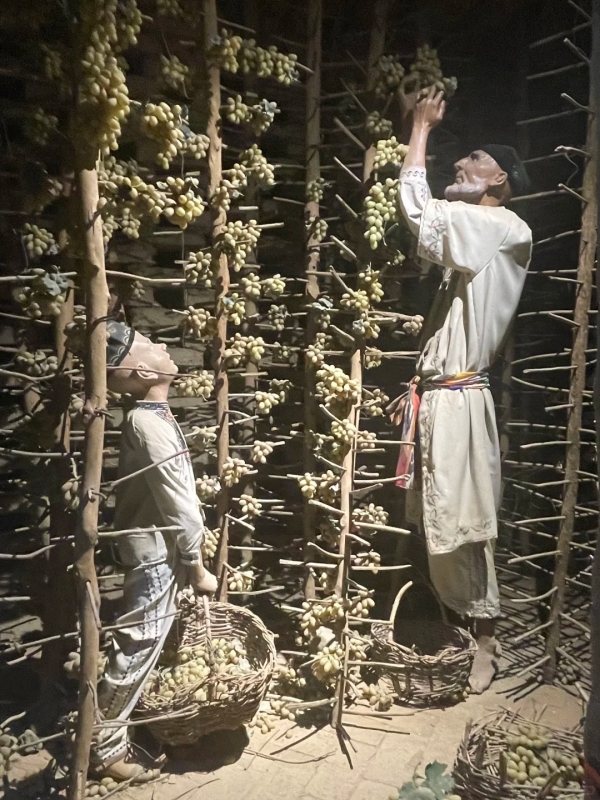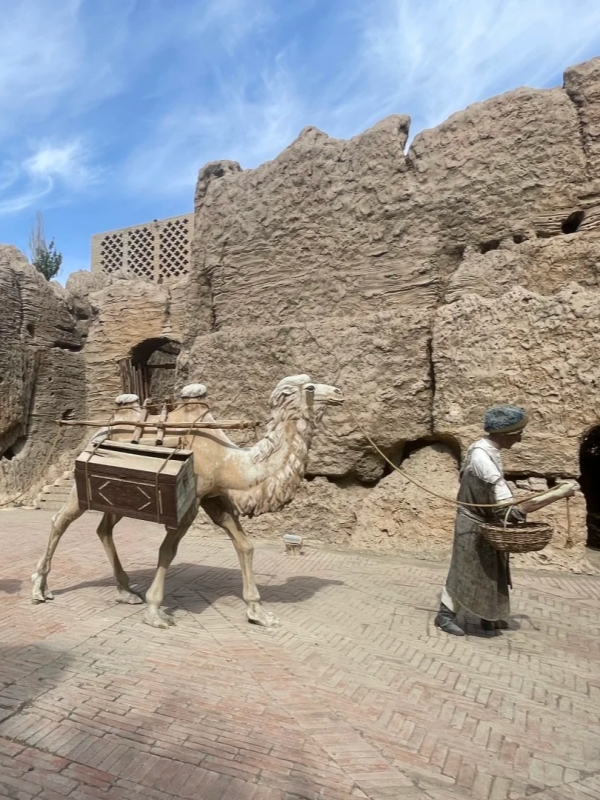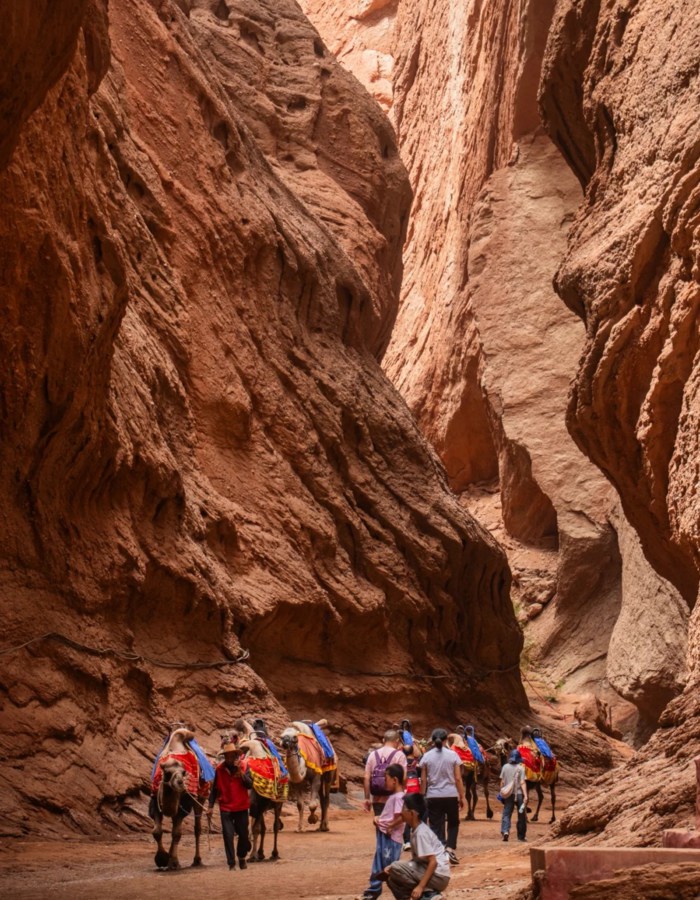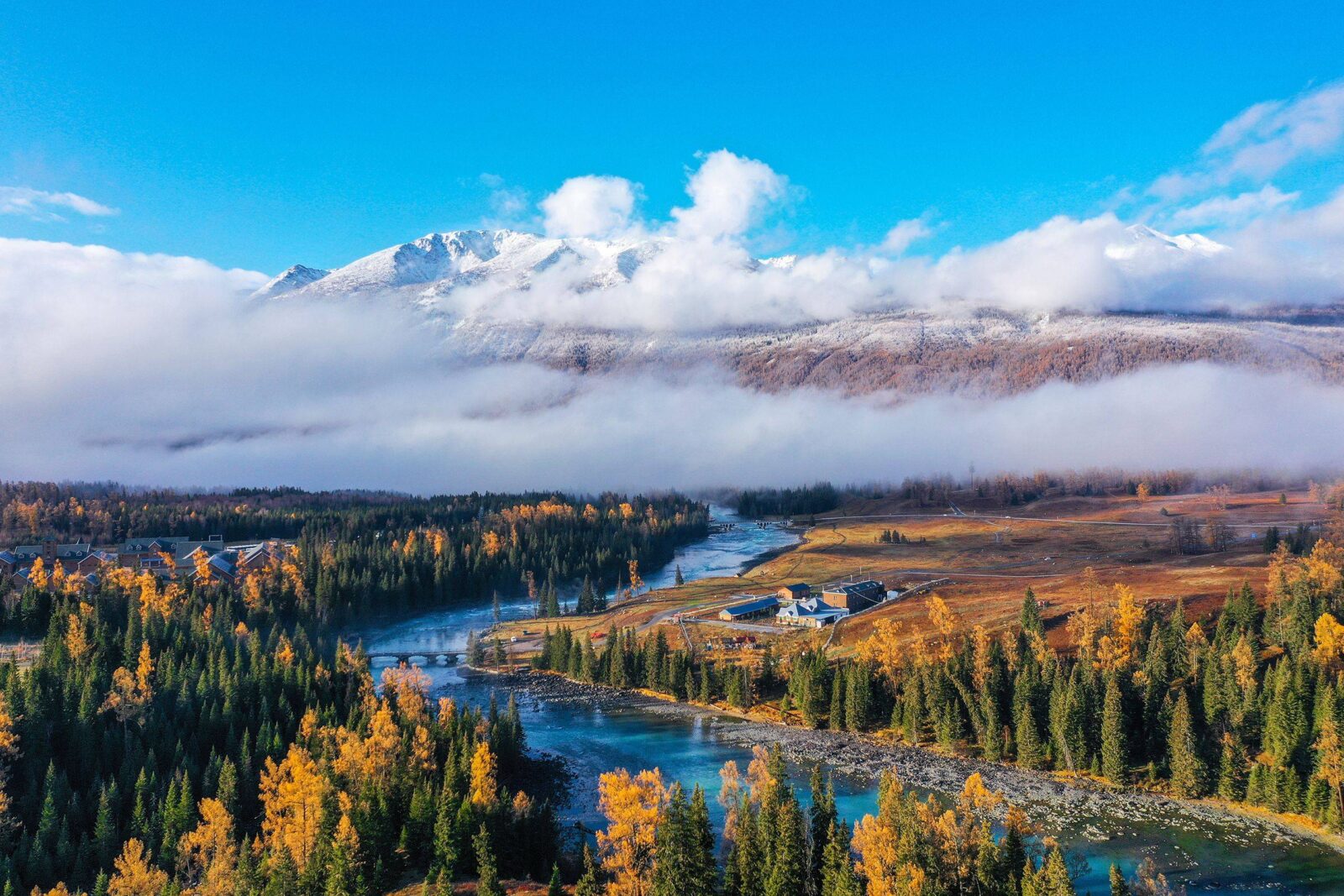
Yarkhoto in Xinjiang
Yarkhoto, or Jiaohe Ancient City, is a 2,300‑year‑old ruin carved directly from the desert plateau of Turpan. This ancient stronghold was once a capital of the Jushi Kingdom and its ruins rank high among the most complete of the cities along the Silk Road. Because it was dug from raw earth as opposed to built with bricks, its government halls, temples and houses are still visible under the glaring desert sun. On these wind-polished streets, there is something of the beating heart of an oasis that once breathed between two vital needs, trade and religion.
Are you ready for the secrets of the desert? This guide is not content with picturesque scenes and post card narratives; there will be lost temples to visit, half-buried tunnels and concealed pits of joy that the natives whisper about. We will together tear the turban from Yarkhoto, reading its stories along streets worn by sand and lonely ruins, in a book of travelling adventures that is somewhat of a mystery hunt, and every detour adapted to mutation by the desert warns you to go ahead.
Essential Information About Yarkhoto
| 🏷️ Item | 📖 Details |
|---|---|
| 🏛️ Name | Yarkhoto (Jiaohe Ancient City) |
| 📍 Location | 10 km west of Turpan, Xinjiang, on a plateau between two rivers |
| 🕰️ Founded | About 2,300 years ago, once the capital of the Jushi Kingdom and later Tang’s Anxi Protectorate site |
| 🧱 Features | Entirely carved from earth cliffs, preserving clear zones for government, temples, and dwellings |
| 🌏 UNESCO Heritage | Listed in 2014 as part of the “Silk Roads: Chang’an–Tianshan Corridor” World Heritage Site |
| 🎟️ Ticket & Hours | Entrance fee 70 RMB, open daily 09:00–18:00 (longer hours in summer) |
| ☀️ Travel Tips | Best visited early morning to avoid heat; bring water, sunscreen, and wear sturdy shoes |
What’s the Real Story Behind These Desert Walls?

Yarkhoto Gate
The Birth and Death of a Desert Capital—From Kingdom Glory to Dust
Yarkhoto, “Where Two Rivers Meet,” was the heart of the desert plain of Turfan. Between the third and seventh centuries it was the oasis where the Silk Road pulsed with the traders and monks and nomads by whom China and central Asia were united. Its streets, five meters across, echoed with laughter and camels and the wind’s perfume of spices. On a plateau fourteen feet high the city stood invincible, its cliffs the walls of nature and its towers the first beams of the rising sun.
But after the centuries of change, it was isolation that brought about its dafog. When the Mongols came, the stone strength of Yarkhoto could not survive the fire and thirst. By the year 1273 the city was still. But the cliffs are there, winds and memories of it have sculptured them, telling of trade and faith and rebellion, their stories still attaching themselves to the ruins.
Yarkhoto sleeps beneath the desert sands, but its reflection lives high above in Tianchi Lake in Xinjiang’s Tianshan Mountains.
The Carved-City Concept — How Ancient Engineers Shaped the Earth
Not like most Silk Road cities which grew of brick and stone, was Yarkhoto carved in the earth itself. The builders gouged deeply into the loess to give them temples, and alleyways and halls of a breath of the air of the desert. Within their thick walls, there stayed warm in the bitter winters, and they cooled the interiors when the temperatures crawled over the 50°C, a marvel of ancient sustainability. Travellers on Trip Advisor call Yarkhoto “A hauntedly beautiful city which has been cut into the earth.”
Walking through these chambers of hollow stone streets is like stepping into a living fossil. Every wall, every passage-way, bears the echo of a civilization that preferred endurance to display. The very fibres of the city, prove that strength may lie silently, hidden from men’s eyes, in the words of sand and sun.
What Will You Actually See When You Walk Through the Ruins?
Start With The Visitor Center — A 3D Peak into the Past
Prior to walking into the ruins, spend 15 minutes watching the video of the 3D reconstruction. I skipped it on my first visit because usually these things are gimmicky, but I came the next day purposely to watch it. It showed what the whole city looked like in Tang Dynasty times, and it completely changed the way I viewed the ruins. You could see what you were looking at instead of just seeing walls that had been eroded.
The VR experience costs an additional 20 RMB, and honestly? It’s worth it if you have the time. You walk through a digital representation of the city with people, markets and temples - all the scene. Most heritage sites charge for VR experiences that seem like an afterthought, but this one adds the context.
Central Avenue — The Beating Heart of an Ancient Trade Route
This five-meter wide avenue runs 350 straight meters through the city center. As you walk it, you literally trace the route of the Silk Road merchants who used it 1,400 years ago. The surface consists of packed earth worn smooth by the feet of centuries of passersby — you can even feel the noticeable depressions where the footing is most trodden.
What to look for: The drainage channels carved on either side. The city had a system of drainage and sewage in the 7th century, which is somehow a little impressive. Also note the little alcoves giving off the street — they were shop spaces where vendors sold various goods. Some of the doorways are taller than others. You can guess that they are the entrances to houses of richer citizens or buildings of more importance.
Photography tip: Best shot is from the northern end looking south around noon, when overhead sun creates sharp shadows that define the street edges. Early morning works too, but you get side-lighting that flattens the perspective a bit.
My experience: I walked this street three times during my visit. The first time I was rushed and barely noticed details. The second time I sat on a fallen wall section for 20 minutes just observing—that's when I noticed the drainage system, the varying door heights, the worn grooves in the path. Take your time here. The details matter more than covering ground quickly.
Buddhist Temple Complex — Where Faith Shaped the City’s Soul
The sprawling foundation walls in the western section mark what was once a major religious center housing 300+ monks. Multiple shrines, meditation halls, and a large stupa stood here during the Tang Dynasty. What remains now are lower walls and floor plans, but the scale tells you how important Buddhism was to Yarkhoto's identity.
During peak years, monks from India, Kashmir, and inland China studied at this complex. The temple library held manuscripts in Sanskrit, Chinese, and Tocharian—a now-extinct Indo-European language. In the 1950s, archaeologists discovered sealed chambers with intact Buddhist frescoes. Those are now displayed at Turpan Museum, and honestly, they're worth seeing before or after Yarkhoto. The colors and artistic detail survived remarkably well.
Visitor note: When I visited in October, part of the temple area was closed for stabilization work. Conservation needs rotate, so check at the entrance for current access. The site managers are pretty good about providing alternative viewing angles when main sections are restricted.
From Yarkhoto’s silent ruins to temples that still breathe faith, trace the timeline in China Historical Sites.
Residential District — Everyday Life Frozen in Sandstone
This is where Yarkhoto becomes personal. Walking through the remains of homes—seeing courtyards where families cooked, storage areas where they kept grain, rooms where kids slept—brings the abstract history into sharp human focus.
You'll see multi-room dwellings, some originally two stories tall (floor supports are still visible). Many have small courtyards where daily life happened. Some rooms have niches carved into walls at different heights—these were shelves for oil lamps, household goods, maybe small Buddhist statues. Look for the smooth-worn doorways and steps. That polish came from thousands of people passing through daily routines over centuries. It's one of the most moving details you can see—physical record of ordinary life.
Photography note: The labyrinthine quality of the residential quarter creates interesting compositions. Early morning or late afternoon side-lighting enhances the textures of eroded walls. Midday is too harsh unless you're shooting into shaded areas.
Small moment: In one courtyard, I found what was clearly a children's room—smaller than surrounding rooms, with carved niches at child height. Standing there, I thought about some Tang Dynasty kid stashing toys in those niches 1,300 years ago. Maybe it's just me, but these small human connections across time are what make travel meaningful beyond just checking off sites.
Observatory Viewpoint — The Perfect Spot to See Time Stand Still
Before or after walking the ruins, climb to the modern observation platform near the south entrance. This elevated viewpoint gives you the aerial perspective needed to understand the city's layout and defensive advantages.
Best time: Sunset, hands down. I returned specifically for this after my initial morning visit, paid the entrance fee again, and it was completely worth it. The entire plateau glows orange-gold for about 20 minutes. You can see the full extent of the cliff-edge perimeter, the two river valleys (usually dry but visible), and on clear days, the Flaming Mountains on the eastern horizon.
Practical tip: Bring a light jacket even in summer. The desert cools fast at sunset, and there's no shelter up there. The wind picks up too—secure your hat.
Hidden Corners Most Tourists Miss (But You Shouldn’t)

Yarkhoto
Underneath Paths — Echoes Underground
In the southeast corner is a group of half dug tunnels. It is not exactly known what these were used for storage cellars, egress for defense, or both. They are easily overlooked since the entrance is partly blocked from view by a modern structure. Looking in you can see the tunnels leading off into darkness. It is honestly kind of creepy.
Karez Connection Points — The Lifeblood of a Desert Culture
Look for round depressions in the resident areas. These are holes leading down to the ancient underground water channel, Karez system—the supply of water to the city. The Karez irrigation engineering is something impressive in itself (over 5000 kilometers of tunnels in the Turpan region) and seeing the connection points makes it easy to understand how desert cities exist. The Turpan Karez Museum will explain the system entirely, if you want the technical information.
The Painted Wall — Traces of Color that Will Not Fade
My guide pointed out a dwelling in the northwestern residential district where a faint red pigment is still on the walls. The more affluent indigenes painted their houses but most tourists pass by because the color is eluded. It has to be seen in the proper light and when it is seen better early in the morning.
Planning Your Trip Like a Pro: When, How, and What to Bring
When to Come — Seasons That Bring the Ruins to Life
| Season | Temperature | What to Expect |
|---|---|---|
| Apr-Jun | 15-35°C | Clear weather, moderate crowds, desert wildflowers if you're lucky |
| Jul-Aug | 35-50°C | Brutal heat—only visit before 10 AM unless you enjoy feeling like a rotisserie chicken |
| Sep-Oct | 20-30°C | Best overall conditions, grape harvest season, golden afternoon light |
| Nov-Mar | -10-15°C | Almost no crowds, occasional snow creates stunning visuals, shorter daylight limits photography |
Time needed: 2-3 hours for a standard visit, 4+ hours if you're shooting seriously or want to sit and absorb the atmosphere. I spent 5 hours across two visits and still felt like I could've stayed longer.
Tickets & Getting There — The Easy Way to Reach Yarkhoto
- Admission: 40 RMB standard (20 RMB with valid student ID, free for kids under 1.2m and seniors 65+)
- Combined ticket: 100 RMB covers Yarkhoto, Gaochang Ancient City, and Astana Tombs—saves 30 RMB if you're doing all three
- From Turpan: Bus 102 runs every 40 minutes (3 RMB, 30-minute ride), taxi or Didi costs 50-70 RMB (20 minutes), hotel tours run 200-300 RMB per person with guide included
- Hours: 8 AM-8 PM April through October, 10 AM-6 PM November through March
You can buy tickets easily on Trip.com, which lists updated entry prices and combo deals. For detailed guided tour packages, Klook provides options that include transport and local guides. To confirm official opening times and seasonal hours, check the Turpan Tourism Bureau website before your visit
What to Actually Bring — Stay Cool, Comfortable, and Prepared
Don't overthink this. The site is dry, exposed, and has zero shade.
Essentials:
- Hat with a brim (baseball caps aren't enough—you want full sun coverage)
- SPF 50+ sunscreen (reapply every 2 hours)
- 2-3 liters of water per person (there are no vendors inside, and you'll drink more than you expect)
- Closed-toe shoes with good grip (the terrain is uneven, and loose sand collects in some areas)
- Light jacket for sunset visits (desert temperature drops are real)
Skip:
- Umbrellas (wind makes them useless)
- Heavy camera bags (you'll be walking 3+ kilometers)
- Fancy clothes (dust gets everywhere)
Photography Tips — Capture the Ruins in Their Best Light
Best light: 6-8 AM or 6-8 PM during golden hour, when sunlight paints the ruins warm orange-gold. Midday light is harsh but works for shooting into shaded courtyards and doorways. After sunset, the blue hour adds mysterious calm—tripod required.
Gear: Wide-angle lens (16-35mm) for city layout shots, 50mm for wall textures and details. Polarizing filter helps with desert glare. Honestly, even a decent phone camera works fine if you nail the timing.
Technique: Use doorways and windows as natural frames. Shoot from low angles to emphasize the carved-down construction. Include a person in your frame for scale—the ruins look weirdly smaller without human reference.
Drone policy: Allowed but requires 3-day advance permit through the visitor center. Enforcement is strict—don't try flying without permission. They will stop you.
Make the Most of Your Turpan Trip: Yarkhoto and Beyond
The One-Day Turpan Circuit — Your Ideal Silk Road Loop
Yarkhoto works perfectly with two other major Silk Road sites, all within 30 kilometers of each other:
Recommended schedule:
- 8:00 AM – Yarkhoto (2.5-3 hours including viewpoint)
- 11:30 AM – Gaochang Ancient City (2 hours, bring lunch—there's a small restaurant at entrance)
- 2:30 PM – Bezeklik Thousand Buddha Caves (1.5 hours)
Transportation: Private car charter costs 400-500 RMB for the day (best flexibility, split among 3-4 people). Shared tour vans run 150-200 RMB per person (cost-effective but fixed schedule). Public bus plus taxi costs around 100 RMB per person but eats up time waiting for connections.
Heat management: Turpan holds China's heat record at 49.6°C. In summer, start at dawn. By noon, the ruins feel like walking on a griddle. I made the mistake of arriving at 1 PM in July once—lasted 45 minutes before retreating to an air-conditioned car.
Turpan Karez Museum — The Water System That Made Life Possible
40 RMB entry, needs about 45 minutes. This explains the 2,000-year-old underground irrigation system that made desert cities like Yarkhoto possible. You can walk through actual tunnels and see how water traveled underground without evaporating in the desert heat. The engineering rivals the Great Wall in scope and ambition. To be fair, it's not visually stunning, but the ingenuity is impressive.
Flaming Mountains — Fiery Landscapes to End Your Day
15 kilometers from Yarkhoto. The red sandstone ridges provide dramatic contrast after ancient ruins—fire-red rock formations against blue sky. Best visited late afternoon when the setting sun intensifies the red color. Takes about an hour. Honestly pretty touristy (there's a giant thermometer that reads surface temperature), but the landscape is legitimately striking.
FAQs: Common Questions About Visiting Yarkhoto
Q: Worth visiting if I've seen Petra or Angkor Wat?
Yarkhoto is absolutely worth your time even if you’ve explored Petra or Angkor Wat. It’s carved directly into a sandstone cliff, not built up from the ground. The silence of the desert and the wind-worn ruins create a haunting beauty. While Petra dazzles with color and Angkor with grandeur, Yarkhoto pulls you in with solitude and its untouched authenticity.
Q: Yarkhoto vs. Gaochang — which is better?
Yarkhoto is older by over 2,300 years and sits dramatically on a cliff edge overlooking the Toyuk Valley. Around 40% of its ancient city layout remains intact, showing Buddhist temples, government sites, and old streets. Gaochang is larger and flatter, better for casual strolls. If you only have time for one, Yarkhoto feels more emotionally charged and atmospheric.
Q: Can I visit Yarkhoto as a day trip from Urumqi?
It’s possible, but the drive takes more than seven hours round-trip. You’d only get two or three hours at the site, which barely scratches the surface. A smarter plan is to stay overnight in Turpan, just 30 minutes away, so you can explore Yarkhoto at sunrise when the cliffs glow red and the valley air is still cool.
Q: Are there English guides or signs at Yarkhoto?
Yes, major landmarks have clear bilingual signs in Chinese and English. You can also hire English-speaking guides for 200–300 RMB, available at the visitor center. Audio guides and mobile apps offer self-guided routes that highlight Buddhist carvings, city gates, and ancient watchtowers, making the visit easier for non-Chinese speakers.
Q: Is Yarkhoto safe to explore?
Yes, it’s very safe, but the heat can be brutal from June to August. Carry water and sunscreen at all times. The site has uneven paths and steep drop-offs, so stay within marked areas. A first-aid station and shaded rest stops are available near the main entrance for visitors’ safety.
Q: Can Yarkhoto be combined with Flaming Mountains?
Definitely. The Flaming Mountains are just 15 kilometers away and make a perfect half-day pairing. Spend your morning at Yarkhoto, then head for the Flaming Mountains after lunch for desert photography. The contrast between Yarkhoto’s ancient ruins and the fiery red ridges nearby makes this combo one of Turpan’s best-loved routes.
